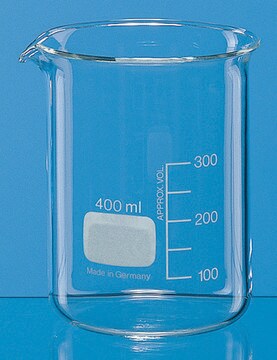T59455
Triethylene glycol
ReagentPlus®, 99%
Sinónimos:
Triglycol
About This Item
Productos recomendados
vapor density
5.2 (vs air)
Quality Level
vapor pressure
<0.01 mmHg ( 20 °C)
product line
ReagentPlus®
assay
99%
form
viscous liquid
autoignition temp.
699 °F
expl. lim.
9.2 %
refractive index
n20/D 1.455 (lit.)
pH
6.5-7.5 (20 °C, 100 g/L)
bp
125-127 °C/0.1 mmHg (lit.)
mp
−7 °C (lit.)
density
1.124 g/mL at 20 °C (lit.)
SMILES string
OCCOCCOCCO
InChI
1S/C6H14O4/c7-1-3-9-5-6-10-4-2-8/h7-8H,1-6H2
InChI key
ZIBGPFATKBEMQZ-UHFFFAOYSA-N
¿Está buscando productos similares? Visita Guía de comparación de productos
Categorías relacionadas
Application
- To prepare fatty acid gelators, which are used to gelate various edible and vegetable oils.
- As a solvent to prepare superparamagnetic iron oxide nanoparticles for in situ protein purification.
- As an absorbent agent in the subsea natural gas dehydration process.
Legal Information
Storage Class
10 - Combustible liquids
wgk_germany
WGK 1
flash_point_f
330.8 °F - closed cup
flash_point_c
166 °C - closed cup
ppe
Eyeshields, Gloves, type ABEK (EN14387) respirator filter
Elija entre una de las versiones más recientes:
¿Ya tiene este producto?
Encuentre la documentación para los productos que ha comprado recientemente en la Biblioteca de documentos.
Los clientes también vieron
Protocolos
99%; Glycerol, ≥99.5%; Tetraethylene glycol, 99%
Nuestro equipo de científicos tiene experiencia en todas las áreas de investigación: Ciencias de la vida, Ciencia de los materiales, Síntesis química, Cromatografía, Analítica y muchas otras.
Póngase en contacto con el Servicio técnico









